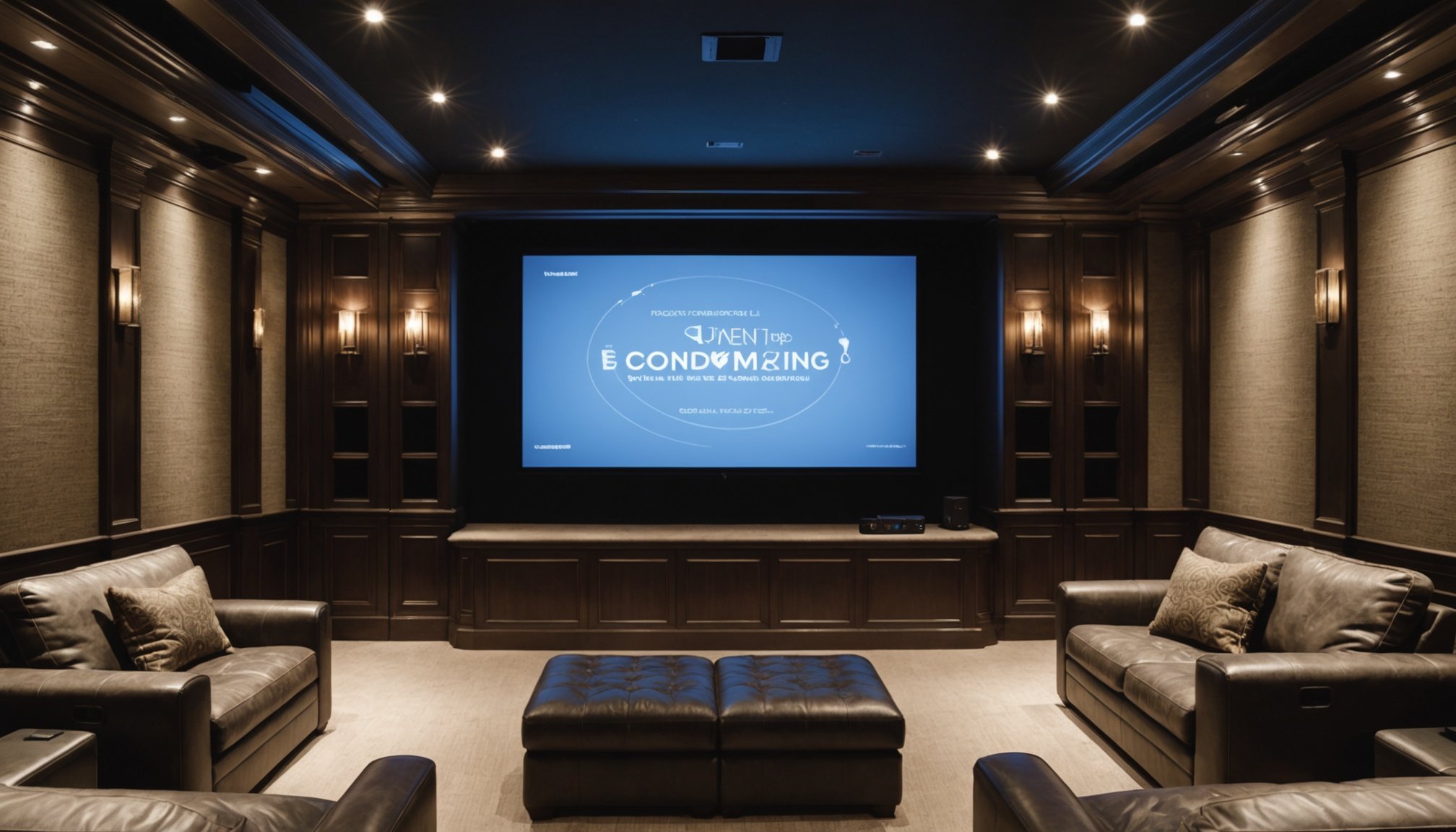Unveiling the Best Soundproofing Solutions for the Ultimate Home Theater Experience
Creating the perfect home theater is a dream for many, but it often comes with a significant challenge: achieving optimal sound quality. The key to an immersive audio experience lies in effective soundproofing and acoustic treatment. Here’s a comprehensive guide to help you transform your home theater into a sonic paradise.
Understanding the Basics of Soundproofing and Acoustics
Before diving into the solutions, it’s crucial to understand the basics of soundproofing and acoustics. Soundproofing involves preventing sound from escaping or entering the room, while acoustic treatment focuses on improving the sound quality within the room.
Also to read : Your comprehensive resource for selecting stylish and durable fabrics for pet-friendly upholstery
Soundproofing: The First Line of Defense
Soundproofing is essential to ensure that the sound from your home theater does not disturb others and that external noises do not interfere with your audio experience. Here are some key steps to soundproof your room:
- Decouple Your Wall: Decoupling means separating the two sides of a wall to prevent vibration and sound transmission. This can be done by creating a double or staggered stud wall or using resilient clips and a hat channel[3].
- Add Sound Insulation: Insert dense materials like Quiet Batt® Soundproofing Insulation between the studs and seal any gaps with acoustical sealant[3].
- Install a Soundproofing System: Use systems like the isoTRAX® Soundproofing System, which includes rails for decoupling the wall and sound-deadening pads[3].
Acoustic Treatment: Enhancing Sound Quality
Acoustic treatment is about optimizing the room’s acoustics to ensure clear, crisp, and balanced sound. Here’s how you can achieve this:
Also to see : Revamp your upgraded loft: the ultimate guide to eco-friendly wool insulation
The Role of Acoustic Panels
Acoustic panels are the heart of any effective acoustic treatment. These panels absorb sound waves, reducing echo and reverb.
Best Sound Absorbing Materials
When choosing acoustic panels, the material is paramount. Here are some of the best sound-absorbing materials:
- Fiberglass: Known for its porous and dense nature, fiberglass is excellent for absorbing a broad frequency spectrum. It converts sound energy into heat, making it a top choice for acoustic panels[2].
- Foam: Specifically open-cell foam, this material is lightweight and easy to install. It is less effective at low frequencies but works well for high and mid-frequency absorption[2].
- Wood Fiber: An eco-friendly option, wood fiber panels are less effective than fiberglass or foam but offer a biophilic aesthetic and are cost-effective[2].
How to Install Acoustic Panels
Installing acoustic panels is relatively straightforward:
- Choose the Right Locations: Identify reflection points in your room where sound waves tend to bounce back. Common locations include walls, ceilings, and corners[1][3].
- Mounting Options: Use adhesive or Z-clips to mount the panels. For a more decorative approach, consider art acoustic panels that double as decor[3].
Designing Your Home Theater Space
The design of your home theater space plays a crucial role in the overall audio experience.
Room Acoustics Considerations
- Ceiling Height and Shape: A higher ceiling can lead to better sound dispersion, but it also increases the risk of sound reflections. Consider using sound-absorbing ceiling clouds to mitigate this[2][4].
- Wall and Floor Materials: Choose materials that are not highly reflective. For example, carpets and upholstered furniture can help absorb sound waves[2].
Corner Bass Traps
Corner bass traps are essential for managing low-frequency sound waves, which can otherwise cause resonance and distortion.
- Why Corner Bass Traps?: Low-frequency sound waves tend to accumulate in corners. Using corner bass traps filled with dense materials like fiberglass or foam can significantly improve the sound quality[1][4].
Practical Insights and Actionable Advice
Here are some practical tips to help you create the ultimate home theater experience:
DIY vs. Commercial Acoustic Panels
- DIY Acoustic Panels: Making your own acoustic panels can be cost-effective. Use a wooden frame, fill it with dense insulation material like rock wool or acoustic foam, and cover it with breathable fabric[1].
- Commercial Acoustic Panels: If you prefer a more polished look, commercial panels like the AlphaSorb® Fabric Wrapped Acoustic Panel or the Kuchoow Acoustic Panels offer high-quality sound absorption and aesthetic appeal[2][4].
Combining Different Materials
- Hybrid Approach: Use a combination of materials to achieve a balanced acoustic environment. For example, pair fiberglass panels with foam panels to cover a broader frequency spectrum[2].
Table: Comparing Sound Absorbing Materials
| Material | Porous Nature | Density | Frequency Absorption | Cost-Effectiveness | Aesthetic Appeal |
|---|---|---|---|---|---|
| Fiberglass | High | High | Broad Spectrum | Moderate | Neutral |
| Foam | High | Low | High & Mid Frequencies | Low | Versatile |
| Wood Fiber | Medium | Medium | Medium Frequencies | High | Biophilic |
| Polyester Acoustic | High | Medium | Broad Spectrum | Moderate | Modern |
Real-World Examples and Anecdotes
Home Studio Transformation
Consider the story of a musician who transformed his home studio using DIY acoustic panels. By creating panels filled with rock wool and mounting them on walls and ceilings, he significantly reduced echo and reverb, allowing for clearer recordings.
Home Cinema Makeover
A home cinema enthusiast used a combination of commercial and DIY acoustic panels to optimize his room’s acoustics. He installed fiberglass panels on the walls and foam panels on the ceiling, resulting in a dramatic improvement in sound quality.
Quotes and Expert Insights
- “Sound absorption is a powerful solution to the often unrecognized issue of sound murkiness. Every room has certain acoustics that determine how we perceive sound,” says an expert from Acoustical Solutions[2].
- “The material characteristics of fiberglass allow for the absorption of a broad frequency spectrum, making it a more full solution than other sound absorption materials,” highlights another expert[2].
Creating the ultimate home theater experience is a multifaceted task that requires careful consideration of both soundproofing and acoustic treatment. By understanding the basics, choosing the right materials, and designing your space thoughtfully, you can achieve a high-quality audio experience that enhances your home theater.
Final Tips
- Start Small: Begin with a few acoustic panels and observe the improvements before adding more.
- Experiment: Don’t be afraid to try different materials and placements to find what works best for your space.
- Consult Experts: If you’re unsure, consult with audio experts or acousticians to get personalized advice.
With the right approach, you can transform your home theater into a sonic haven where every movie night and music session is an immersive and enjoyable experience.

